In this article, you’ll learn what is cutting tool? Its materials, classification, and types of cutting tools all are explained with pictures.
Also, you can download the PDF file at the end of this article.
What is a Cutting Tool?
Cutting tools are wedge-shaped, sharp-edged tools used during machining to cut extra layers of material from a workpiece to achieve the desired shape, size, and accuracy. It has a secure connection to the machine tool.
The tool must be able to endure the heat and force produced during the machining process, and the cutting tool material must be harder than the material being cut (workpiece).
Additionally, the tools need to have a specific geometry with clearance angles so that only the cutting edge of the tool touches the workpiece’s surface. The width, number, and shape of the flutes or teeth, as well as the angles of the cutting face, are all significant factors of the cutting tools.
All of these variables, as well as the speed and feed at which the machine operates, must be optimized for a longer lifespan. Single-point cutting tools and multi-point cutting tools can both be used for cutting.
Let’s move on to the following sections to learn more about types of cutting tools.
Read Also: 14 Types of Lathe Cutting Tools Used in Lathe Machine
Types of Cutting Tools
A cutting tool might have one or more cutting edges that take part in simultaneous cutting in a single pass. The most popular method of classifying a cutting tool is based on how many major cutting edges are actively engaged in the cutting process at any given time.
Based on Common Names of Cutting Tools
Based on this, the cutting tool can be divided into the three categories listed below.
#1 Single Point Cutting Tool
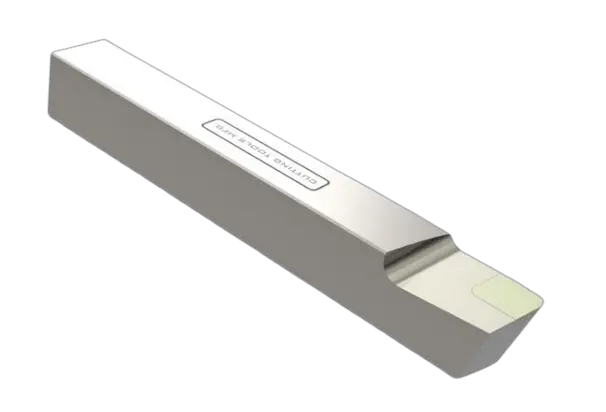
A single-point cutting tool only has one main cutting edge that can remove material in one motion. In turning, shaping, planning, and related processes, a single-point cutting tool is employed.
High-carbon steel, high-speed steel, ceramic, and diamond are some of the hard materials used to make these cutting tools. Since a single cutting edge does all the work, materials might not be removed quickly with a single-point cutting tool, and the cutting edge might even break.
You must stop using the tool and replace it entirely if a cutting edge breaks while you’re using it. A single-blade reamer is an example of a single-point tool with just one cutting edge.
Advantages of Single Point Cutting Tool
- Single-point cutting tools are relatively easy to design and make, and they take less time.
- These tools are considerably less expensive.
Disadvantages of Single Point Cutting Tool
- During machining, a single cutting edge maintains constant physical contact with the work material. As a result, tool life is short due to the high tool wear rate.
- The rate of rise in tool temperature is high due to constant contact. This has the dual effects of accelerating tool wear and heating the machined surface.
Read Also: 26 Types of Screws & Their Uses [with Pictures & PDF]
#2 Double Point Cutting Tool
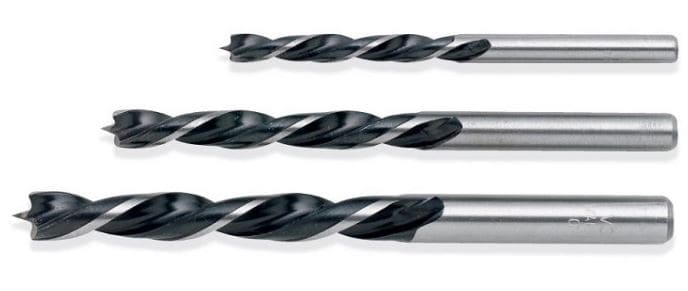
A double-pointed cutting tool has two cutting edges that can cut and shear simultaneously in one motion. Single-point cutting tools contain one main cutting edge, while multi-point cutting tools contain more than two cutting edges for performing machining action in one pass.
In some cases, the only two categories into which cutters can be divided are double-point and multi-point. Additionally, a cutting edge is created by intersecting a rake surface and a flank surface. Consequently, double-point cutting tools have two flank surfaces and two rake surfaces.
The only example of a double-point cutting tool is a drill. Drills may have more than two flutes, but the typical metal-cutting drill only has two flutes. Drills’ modified cutting edges might also have more cutting edges, which would classify them as multi-point cutters.
Advantages of Double Point Cutting Tool
- During machining operations, it absorbs shocks like vibrations.
- It is capable of producing a fixed cutting element.
- Unlike single-point cutting tools, this one has two cutting edges working simultaneously.
Disadvantages of Double Point Cutting Tool
- The edges of this tool could be altered.
- The issue with tool precision might arise.
Read also: What is Facing Operation? [Definition, Diagram & Procedure]
#3 Multi-Point Cutting Tool
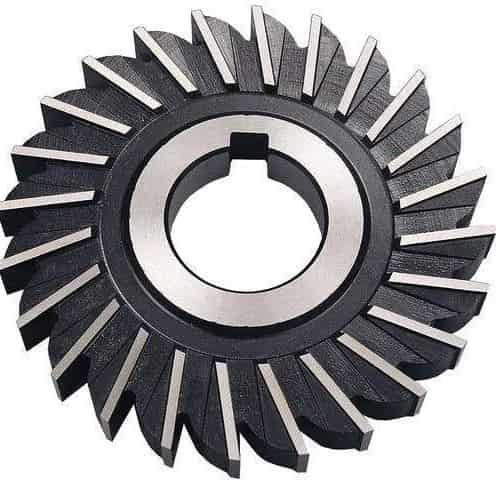
A cutting tool with multiple points has more than two cutting edges that cut simultaneously during a pass. Cutting tools with more than one cutting edge is sometimes considered multi-point cutting tools (instead of double-point cutters).
In a multi-point cutter, the number of cutting edges can range from three to several hundred. As cutting edges appear at the intersection of rake and flank surfaces, rake and flank surfaces are also necessary for each cutting edge.
A popular example of this category is milling cutters. Other cutters are typically multi-point, except the fly milling cutter (a single-point cutter). For example, a small end mill might have three cutting edges, while a large heavy-duty cutter might have up to forty.
Advantages of Multi-Point Cutting Tool
- It has a small chip load per tooth.
- These types of cutting tools facilitate higher speed, feed, and depth of cut.
- Multi-point tools have a high material removal rate and productivity.
Disadvantages of Multi-point Cutting Tool
- These tools are made with complex design and fabrication processes.
- Multi-point cutting tools are more expensive than other types.
- Inherently intermittent cutting.
You might like: Different Types of Lathe Machine Operations
Based on the Motion of the Tool
Based on this, the cutting tool can be divided into the three categories listed below.
#1 Translatory Motion
A translatory motion occurs when a body travels in such a way that all of its particles move in parallel. These tools can be found in lathe machines.
#2 Reciprocating Motion
Reciprocating motion is the repetition of a linear motion that is upward and downward or forward and backward. These tools can be found in shaper machines.
#3 Rotary Motion
The rotary motion occurs when a body rotates around a fixed axis. These tools can be found in milling machines and drilling machines.
Based on Common Names of Cutting Tools
Based on this, the cutting tool can be divided into the following categories listed below.
#1 Drill
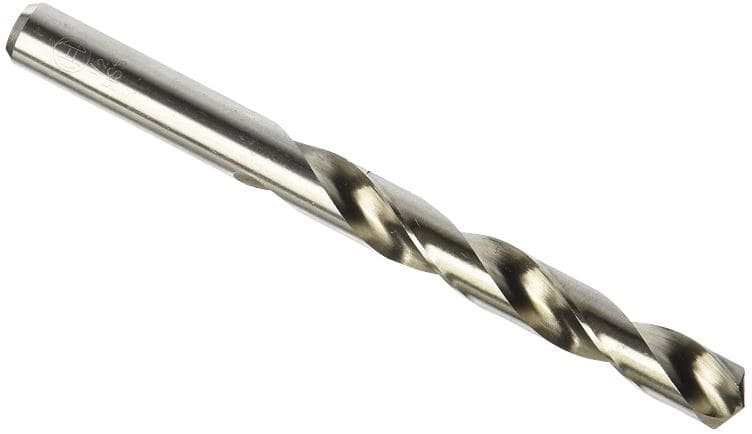
A drill is a type of cutting tool that is employed to create circular holes or to drive fasteners. It is equipped with a bit, either a driver chuck or a drill bit. Due to their greater efficiency and usability, cordless battery-powered types are rapidly replacing hand-operated ones in terms of popularity.
These cutting tools are attached to drilling, milling, or lathe machines because they perform drilling operations. Various types of drills are used in woodworking, metalworking, construction, machine tool fabrication, and utility projects.
#2 Milling Cutter
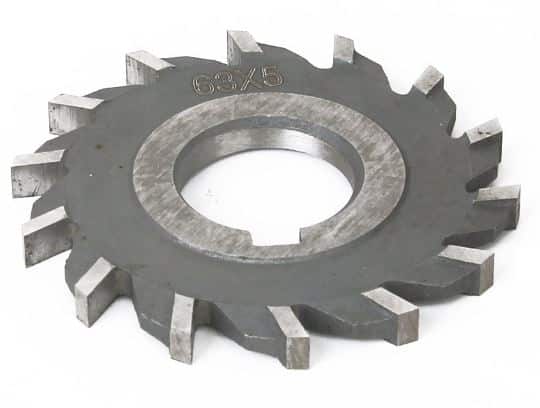
In milling machines or machining centers, milling cutters are cutting tools used to perform milling operations (and occasionally in other machines). By moving inside the machine (such as in a ball nose mill) or by removing material directly from the cutter’s shape (such as in a hobbing cutter), these tools remove material.
#3 Fly Cutter
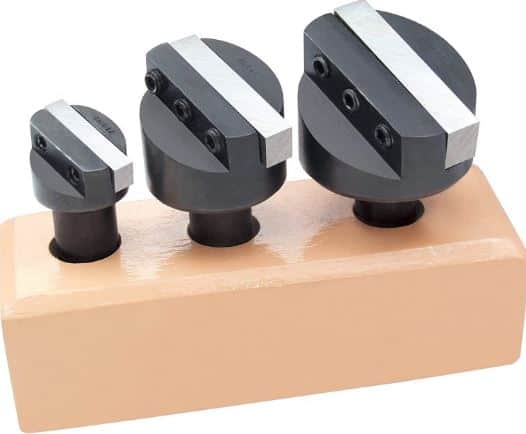
Fly cutters are rotary tools used for plane surfacing that have one or more single-point tools. The fly cutter is a single-point cutting tool mounted in a special holder that resembles a lathe tool.
To machine large and flat surface areas, fly cutters are typically used on a milling machine. There is no need for additional arbors when using fly cutters in manual mills and machining centers.
#4 Shaper
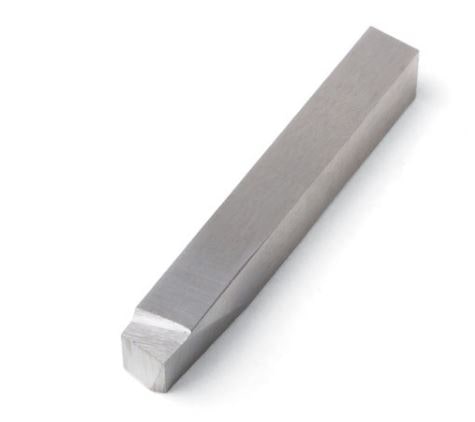
Cutting tools in shapers are single-point tools with clearances, rakes, and other angles similar to those on lathes. Shaper tools are significantly more rigid and heavy to withstand the shock that the cutting tool experiences at the start of each cutting stroke.
For cast iron and steel, the side clearance angle in a shaper tool is only 2 and 40, respectively. The most typical material for a shaper tool is high-speed steel, but harder materials can also be machined using shock-resistant, cemented carbide-tipped tools. This tool is used on a shaping machine to give the workpiece a precise shape and accuracy.
#5 Planer
On a planer machine, only single-point cutting tools are employed. These tools are similar in shape and tool angles to those commonly found on lathes or shaper machines. However, these tools are heavier and have larger cross-sections.
To make heavy cuts over extended cutting strokes, planer tools must operate on coarse feeds. There are three different types of planner tools: solid, forge, and bit. The bits are constructed from cementite carbide, stellite, or high-speed steel.
#6 Boring Bar
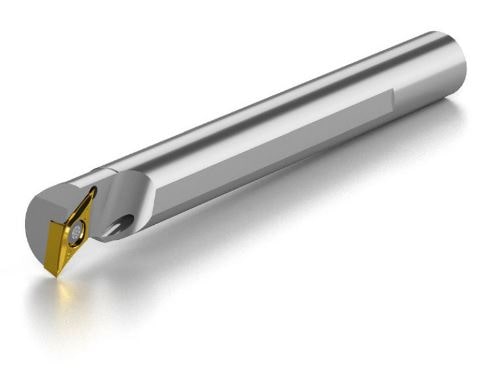
Boring bars are commonly used in metalworking and woodworking. A common technique in construction is boring. For centuries, woodworkers have used boring as a type of drilling. Boring tools are used to make circular plunge cuts in woodworking.
Boring differs slightly in metalworking because the hole it creates doesn’t have to be circular. To create a perfectly circular hole, the tool is pushed and pulled up and down (on the Z axis) while plunging and dragging on the X and Y axes.
#7 Reamer
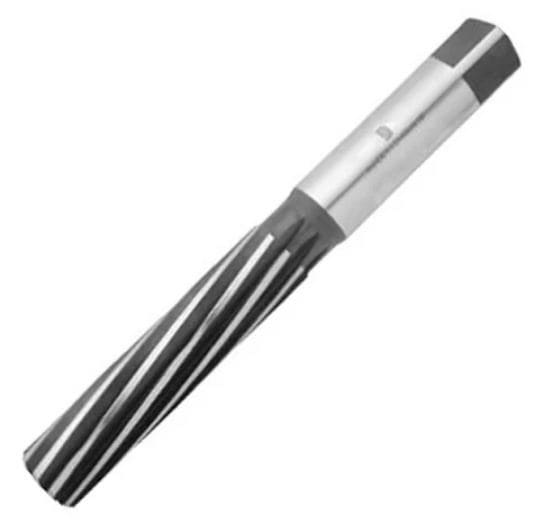
A reamer is a device used to enlarge or finish pre-drilled holes, holes that have been bored, or holes that have been cored to produce a good finish and precise dimensions. A reamer is a multi-toothed cutter used to remove relatively little material.
Reamer tools have cutting surfaces that are either straight, slightly twisted, or spirally fluted and are ground to a very precise diameter. Reamers can be divided into some categories based on their use, design, and shape. These types of cutting tools are used on the drilling machine to carry out reaming operations.
#8 Broach
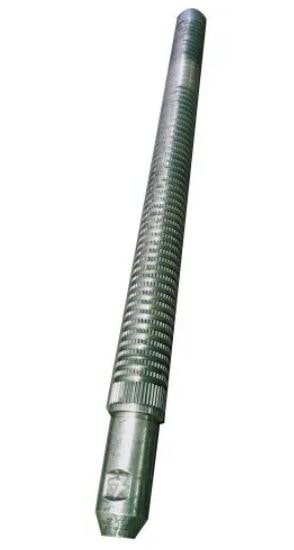
A broaching tool has a series of distinct cutting edges along its length that is referred to as cutting teeth. By increasing the step between any two succeeding teeth on the broach, feed is accomplished. Broaches are typically made of high-speed steel (HSS).
The linear movement of the tool to the workpiece determines the broach’s cutting speed. The broach’s cutting edges’ contours determine the shape of the cut surface (machined surface). On the broaching machine, this cutting tool performs the broaching operation.
#9 Hob
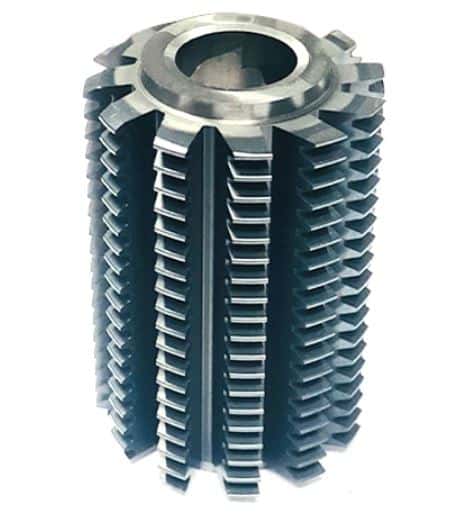
A hob is a cutting tool used for cutting teeth into a workpiece. It has helical cutting teeth and a cylindrical shape. To facilitate cutting and chip removal, these helical cutting teeth have grooves that run the entire length of the hob.
Additionally, there are special hobs made for unique gears like sprockets and spline gears. These types of cutting tools are used to perform hobbing operations on the hobbing machine.
#10 Grinding Wheel
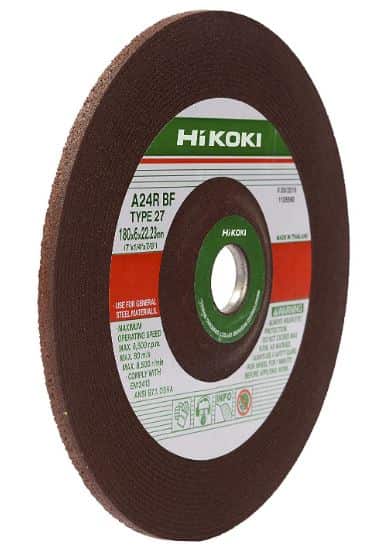
The grinding wheel contains abrasive compounds for grinding and machining. The abrasive grains give the wheel its cutting ability, helping finish the material to the required dimensional accuracy and surface finish.
These wheels are employed in grinding machines. Grinding wheels are consumables, though their lifespan can range from a few hours to many years, depending on their use. As the wheel cuts, individual abrasive grains are periodically released, usually because they become dull and are pulled away by the increased drag.
Read Also: 14 Types of Grinding Machines & Their Uses [Complete Guide]
Based on the Shape of the Cutting Tool
The cutting tools are now further divided based on the shapes of the cutter. Let’s take a closer look at the size-based category into which cutting tools can be categorized:
#1 Solid
Typically, this type of cutter is used as a turning tool on a lathe to carry out the turning operation.
#2 Tipped Tool
These cutters were created using a variety of materials. In other words, the cutters’ bodies are constructed from various materials, while the materials used in their cutting mechanism vary.
There are numerous ways to join these two components of the cutting tools, such as clamping, welding, etc. Examples of the tipped tools include tungsten carbide tipped tools.
#3 Pointed Tool
The cutter’s teo is fine and sharp, and the edges all meet in a single line. Examples of such cutting tools include sharp diamonds mounted on holders and hard carbide cutters.
#4 Grain Size
Depending on the size and quantity of the grains, they are cutting tools classified. If the grain is fine, this will remove more material from the workpiece. However, more material will be removed if the grain size is large. For instance, grinding wheels use cutting tools of the abrasive type.
#5 Tool Bit
This cutter doesn’t rotate. This tool can be used on shaping or planning machines to shape and plan the workpiece according to requirements, among other things.
Since it falls under the category of cutting tools, there is only one primary cutting groove on this particular cutting tool. Cast non-ferrous satellite cobalt, lathe tools in machine holders, etc., are a few typical examples of these types of cutting tools.
Based on Materials Used for Cutting Tools
Based on this, the cutting tools can be divided into the following categories listed below.
#1 High Carbon Steel
The composition of high carbon content enhances the cutting tool’s operation in high-hardness settings. However, when the temperature rises, the hardness reduces.
These cutting tools can tolerate temperatures of up to 400∘C without affecting their structure or composition.
#2 High-Speed Steel
High-speed steel tools feature quicker cutting speeds. The tool is composed of steel alloyed with cobalt, tungsten, and chromium.
These cutting tools can operate under 550°C to 650°C because they are made of strong, hard, and temperature-resistant materials. It’s often found in power saw blades and drill bits.
#3 Ceramic Tool
Because they can tolerate high temperatures, ceramic tools are among the hardest tools used in machining. The operating temperature range for this tool is 1160°C to 1210°C. It’s often found in the lathe and milling machines.
#4 Cemented Carbide
This tool consists of titanium, tungsten, and other metals. The tool gains great strength and hardness as a result.
It offers increased wear resistance and can handle greater temperatures. The tool operates at temperatures ranging from 900∘C to 1000∘C.
#5 Diamond
Diamond-based cutting tools are currently the strongest materials available. This tool provides many benefits in terms of resistance to stress, wear, and temperature. These tools are used to cut through resilient, strong, and hard materials.
#6 Abrasives
Abrasive cutting tools remove material by grinding and erosion instead of cutting with saw teeth.
Abrasive materials are hard and coarse, and they wear away whatever they come into contact with. The tool contains an abrasive substance. A grinding wheel is one of the most basic forms.
Closing It Up
That’s it. Thanks for reading. I hope I have covered everything about the “Types of Cutting Tools.” It would be helpful if you could let me know if there was anything I missed or if you have any doubts about anything I wrote.
Please share this article with your friends if you find it interesting.
Want free PDFs direct to your inbox? Then subscribe to our newsletter.
Download PDF of this article:
Here are some articles you might like to read: